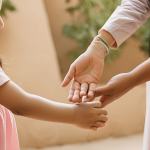Talking to your children about emotional harm is one of the hardest but most important conversations you may ever have. When kids are exposed to emotional harm, whether it’s from a co-parent, family member, or another source, they can feel confused, hurt, or even blame themselves. As a parent, you have the power to guide them through this challenging time by offering reassurance, clarity, and unconditional support.
In this blog post, we’ll help you understand how to approach this sensitive topic in a way that is age-appropriate, empathetic, and healing for your child. If you’re struggling with protecting your kids during a divorce, check out our post on Co-Parenting with a Toxic Ex: Keeping Your Kids Safe for more insights.
Why It’s Important to Talk About Emotional Harm
Children often don’t have the words to describe their feelings. They might not even understand what’s happening to them. By talking openly about emotional harm:
- You can help them process their feelings and understand that their experiences are valid.
- You can reassure them that they are not to blame for the behavior of others.
- You can give them tools to protect their emotional well-being.
Ignoring or avoiding the topic might leave your child feeling unsupported or confused. However, with the right approach, you can turn this conversation into a source of healing and strength.
Step 1: Prepare for the Conversation
Before you sit down with your child, take some time to prepare. Think about:
- Your Goals: What do you want your child to take away from the conversation? This might include understanding that they are not at fault and that their feelings matter.
- Their Age: Younger children need simpler explanations, while older kids can handle more detailed discussions.
- Your Emotions: Be calm and collected. Children pick up on your feelings, so if you’re anxious or angry, they may mirror those emotions.
If you’re unsure where to start, our Guide to Recognizing Emotional Harm in Children offers helpful insights.
Step 2: Create a Safe Space
Choose a quiet, private place where your child feels comfortable. Make sure they know this is a safe space to share their thoughts and feelings without fear of judgment.
- Be Present: Turn off distractions like your phone or TV.
- Listen First: Let your child share what they’re feeling. Even if it’s difficult to hear, resist the urge to interrupt.
- Validate Their Feelings: Say things like, “It’s okay to feel sad,” or “You’re allowed to feel upset about what happened.”
Step 3: Use Simple and Clear Language
The way you explain emotional harm depends on your child’s age and understanding. Keep it simple:
- For younger kids: “Sometimes people say or do things that hurt our feelings or make us feel bad inside. That’s not okay, and it’s not your fault.”
- For older kids: “Emotional harm is when someone’s words or actions make you feel bad about yourself or unsafe. It’s important to talk about it and find ways to feel better.”
Avoid blaming the other person directly. Instead, focus on your child’s feelings and how to help them cope.
Step 4: Reassure Them
Children often blame themselves for the behavior of others. It’s critical to reassure them:
- “This is not your fault.”
- “You didn’t do anything wrong.”
- “It’s my job to keep you safe, and I’ll do everything I can to protect you.”
Reassurance helps children feel secure and supported, especially in situations involving conflict between parents. If you need help setting boundaries with a co-parent, read our Guide to Setting Boundaries with a Toxic Ex.
Step 5: Teach Them Coping Strategies
Equip your child with tools to handle their emotions:
- Breathing Exercises: Teach them simple breathing techniques to calm down when they feel overwhelmed.
- Journaling: Encourage older kids to write down their thoughts and feelings as a way to process emotions.
- Talk to Someone They Trust: Let them know they can always come to you, a teacher, or another trusted adult when they need support.
You can explore more ideas in our Tips for Building Emotional Resilience in Children.
Step 6: Know When to Seek Professional Help
Sometimes, children need more support than you can provide on your own. Signs they might benefit from therapy include:
- Persistent sadness or anxiety.
- Changes in behavior, like withdrawing from friends or family.
- Trouble sleeping or eating.
Reaching out to a child therapist or counselor can provide them with additional tools to process their feelings and heal.
Final Thoughts
Talking to your child about emotional harm isn’t easy, but it’s an essential step in helping them heal and grow. By creating a safe space, using clear language, and offering unconditional support, you can help them understand their emotions and feel empowered to navigate challenges.
If you’re struggling with the effects of divorce on your family, check out our Resources for Supporting Children During Divorce for more guidance. Remember, you’re not alone in this journey, and there’s always help available for both you and your children.


